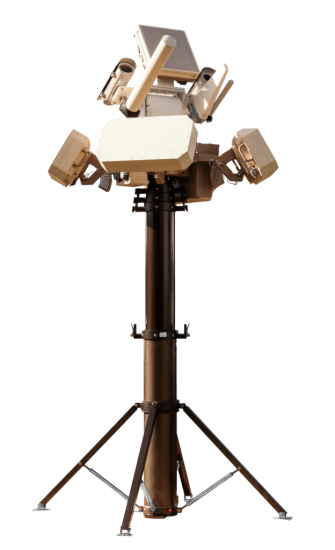“For us, 22 February 2022 was the turning point,” said Radoslaw Piesiewicz, co-founder and Chief Operating Officer of Polish counter-UAS systems manufacturer Advanced Protection Systems (APS), referring to the Russian invasion of Ukraine. “Previously to that, we had a very hard time in gaining traction with some of the customer communities we had been addressing. Now, however, there has been a huge explosion in interest, in parallel with the gigantic increase in the malevolent use of drones. The Ukraine situation is clearly demonstrating the manner in which technology can change the potential outcome significantly. The huge numbers of drones being used (and lost) is focusing attention on the need to develop effective strategies for protecting critical infrastructure, for example, in a future conventional conflict scenario in Europe – or elsewhere”.
The numbers he refers to are, indeed, enormous. One high end estimate, made by the Royal United Services Institute (RUSI) in London, suggests that as many as 10,000 drones are being lost per month in aggregate. Their prevalence, their potential and their persistence on today’s and tomorrow’s battlefields is prompting urgent re-evaluation of preparedness and the rapid evolution of effective strategies. But what does that mean for companies like APS?
“The evolution that has taken place as a result of just 18 months’ watching what is happening in Ukraine is quite remarkable,” Piesiewicz told Unmanned Airspace during a recent demonstration of the company’s system in Liverpool, UK. “Appropriate tactics are evolving, which in their turn are having an effect on development.”
There is, for example, the question of classification of a potentially hostile drone, once detected. Some operators will be happy with the identification of a potential threat as being sufficient to justify taking action. Others will require infinitely greater detail before making a response decision. Since many of these details deal with what the drone operator’s likely intent is – something impossible to achieve, currently, on an autonomous basis and very difficult to achieve even with very experienced C-UAS system operators – this debate merely complicates a procurement or deployment decision, and often makes it impossible.
The question of hard kill vs soft kill functionality also arises. With sovereign regulatory authorities in the civil environment adopting multiple ‘shades of grey’ perspectives on the acceptability of on-the-spot decision-making in time-constrained tactical situations, the debate on this issue is complex and, to a degree, iterative, leading to the potential for decision paralysis. At a recent C-UAS conference in London, one international observer suggested that “not every country has yet had its Gatwick moment,” referring to the 2018 event that cost airlines millions of pounds, disrupted activity for hundreds of thousands of passengers and caused immense gaps in institutional preparedness to be revealed.
The recent APS demonstration in Liverpool, UK, focused on the effectiveness of the company’s range of radars in detecting, classifying and tracking airborne threats at short ranges in an airport environment. “We have been especially scrupulous in the development of our AI algorithms and the development period has been extensive,” said Piesiewicz. “But I think the reality is that we will reveal something before the end of this year. The real issue is we needed sufficient data to be able to build robust solutions. Key for us, though, as we move into a new year and a new era, is to build trust in our technology among user communities. That is critical: it is happening, but we need to accelerate that process”.
Unmanned Airspace understands that APS radars were recently selected for a major C-UAS system sent to Ukraine by the British MoD. For more on that story…watch this space.
For more information: https://apsystems.tech
(Image: The company’s success rests on the proven capabilities of a range of advanced mission-specific radars, available in a wide variety of installation configurations. Credit: APS)




